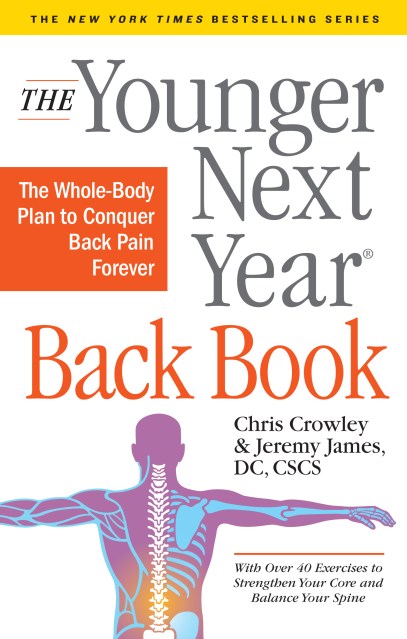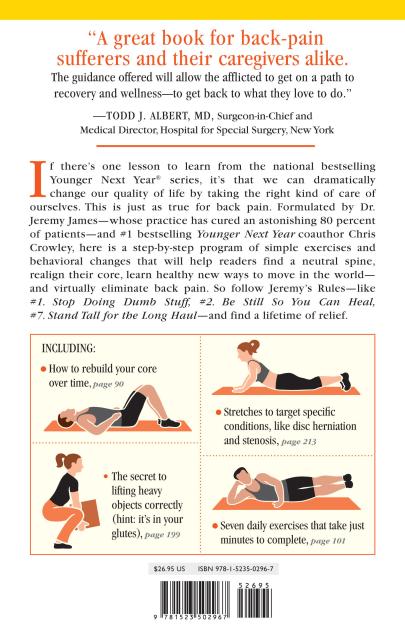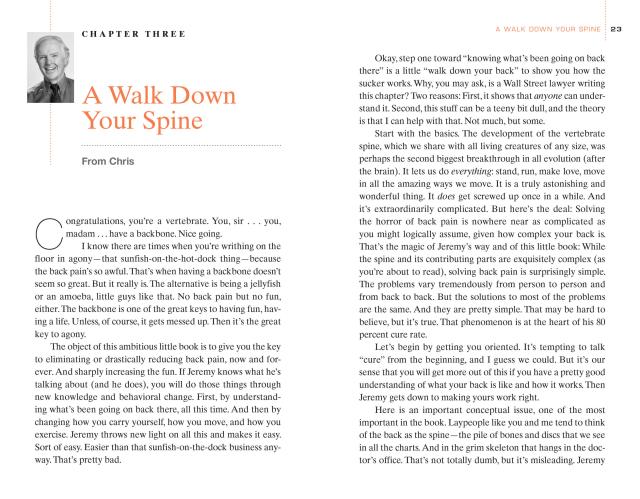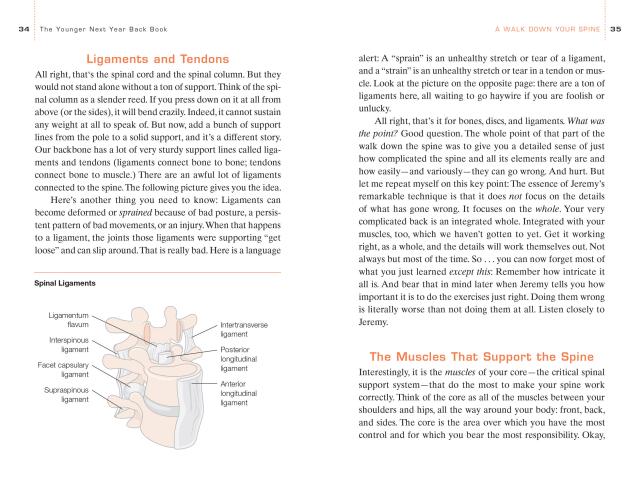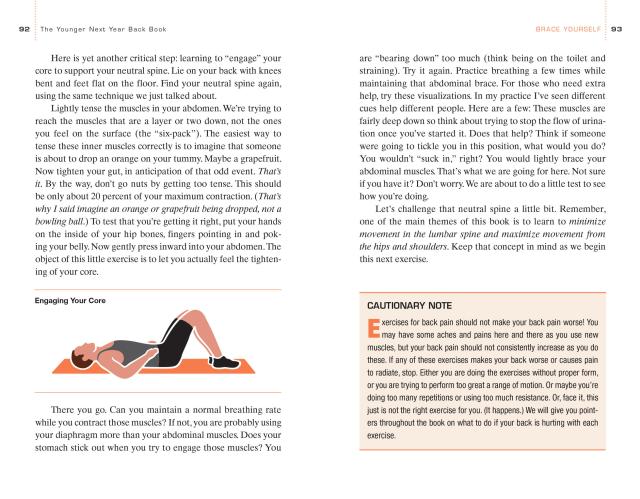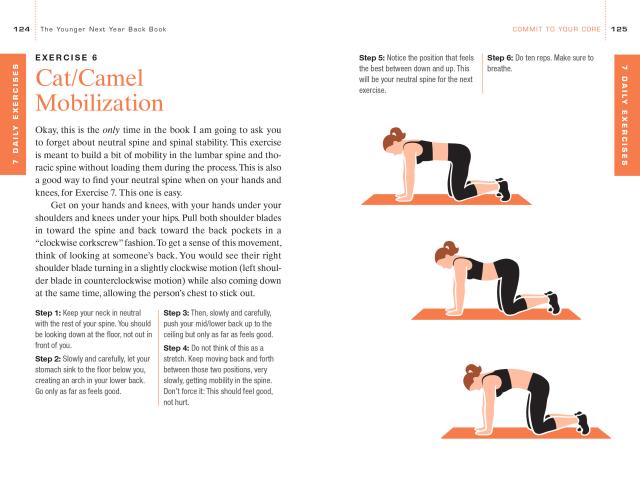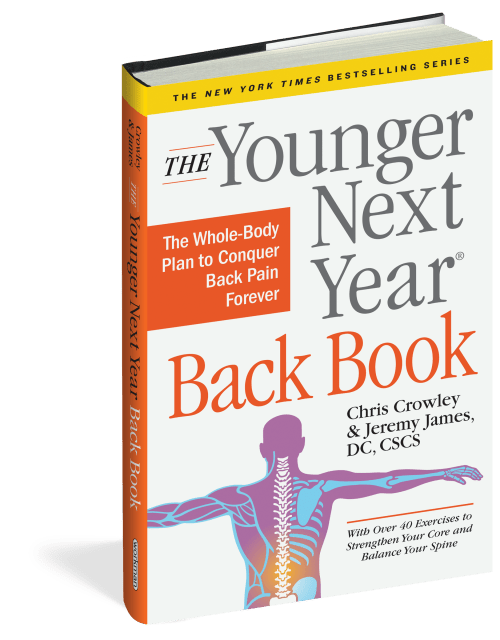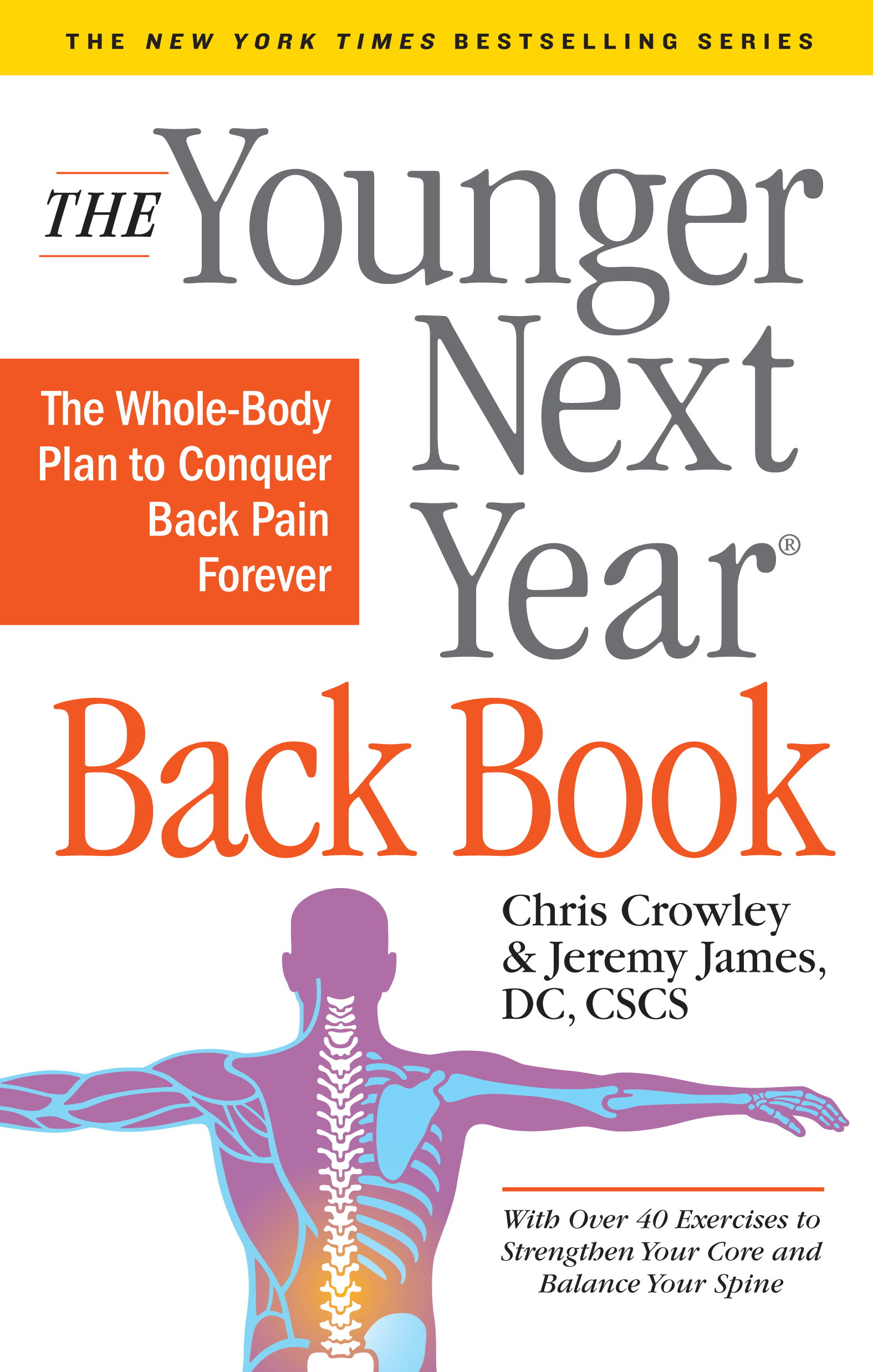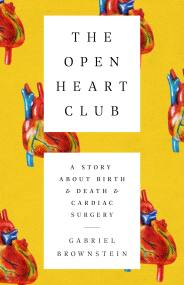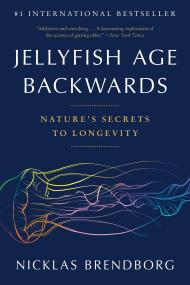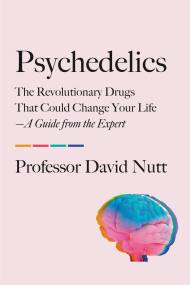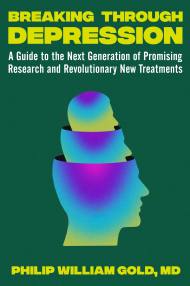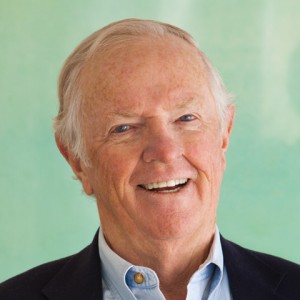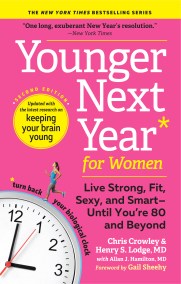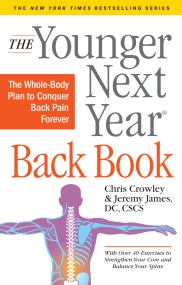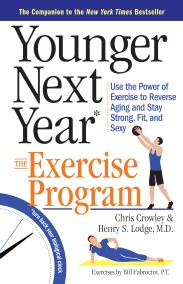Promotion
Use code MOM24 for 20% off site wide + free shipping over $45
The Younger Next Year Back Book
The Whole-Body Plan to Conquer Back Pain Forever
Contributors
By Jeremy James, DC, CSCS
Formats and Prices
Price
$26.95Price
$34.95 CADFormat
Format:
- Hardcover $26.95 $34.95 CAD
- ebook $10.99 $13.99 CAD
- Trade Paperback $15.95 $22.95 CAD
This item is a preorder. Your payment method will be charged immediately, and the product is expected to ship on or around August 7, 2018. This date is subject to change due to shipping delays beyond our control.
Also available from:
“A great book for back-pain sufferers and their caregivers alike.”—Todd J. Albert MD, Surgeon-in-Chief and Medical Director, Hospital for Special Surgery, New York
If there’s one lesson to learn from the national bestselling Younger Next Year series, it’s that we can dramatically change our quality of life by taking the right kind of care of ourselves. This is just as true for back pain. Formulated by Dr. Jeremy James—whose practice has cured an astonishing 80% of patients—and #1 bestselling Younger Next Year coauthor Chris Crowley, here is a step-by-step program of simple exercises and behavioral changes that will help readers find a neutral spine, realign their core, learn healthy new ways to move in the world—and virtually eliminate back pain. So follow Jeremy’s rules—like #1. Stop Doing Dumb Stuff, #2. Be Still So You Can Heal, #7. Stand Tall for the Long Hail—and find a lifetime of relief.
If there’s one lesson to learn from the national bestselling Younger Next Year series, it’s that we can dramatically change our quality of life by taking the right kind of care of ourselves. This is just as true for back pain. Formulated by Dr. Jeremy James—whose practice has cured an astonishing 80% of patients—and #1 bestselling Younger Next Year coauthor Chris Crowley, here is a step-by-step program of simple exercises and behavioral changes that will help readers find a neutral spine, realign their core, learn healthy new ways to move in the world—and virtually eliminate back pain. So follow Jeremy’s rules—like #1. Stop Doing Dumb Stuff, #2. Be Still So You Can Heal, #7. Stand Tall for the Long Hail—and find a lifetime of relief.
Genre:
-
"In the latest installment of the Younger Next Year books, series coauthor Crowley and chiropractor James empower people with often-agonizing back pain. So instructive and descriptive are Crowley and James that everyone curious about the mechanics of the back and everyone with back pain will benefit from their easy-to-understand guide to preventing and treating that common ailment." —Booklist
“This is a great book for back pain sufferers and their caregivers alike. The guidance offered will allow the afflicted to get on a path to recovery and wellness—to get back to what they love to do.”
—Todd J. Albert, MD, Surgeon in Chief and Medical Director, Hospital for Special Surgery
- On Sale
- Aug 7, 2018
- Page Count
- 256 pages
- Publisher
- Workman Publishing Company
- ISBN-13
- 9781523502967
Newsletter Signup
By clicking ‘Sign Up,’ I acknowledge that I have read and agree to Hachette Book Group’s Privacy Policy and Terms of Use
